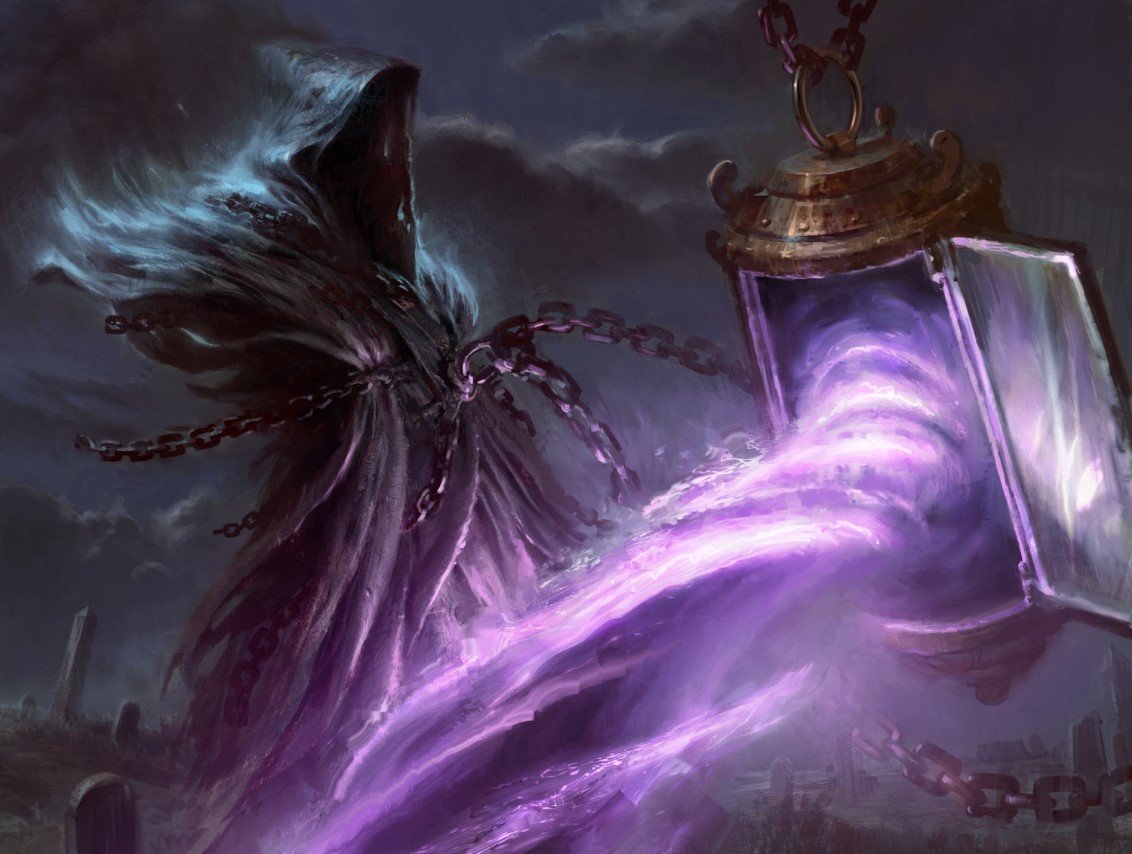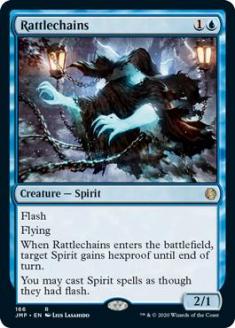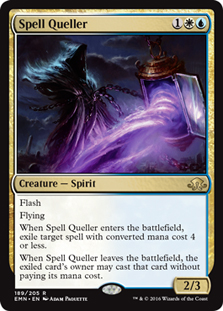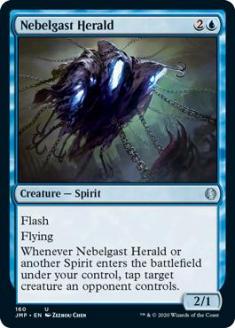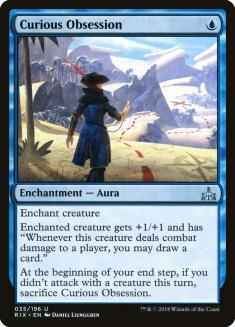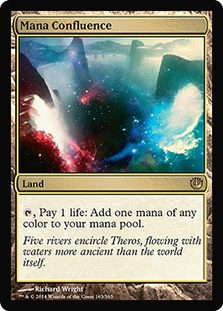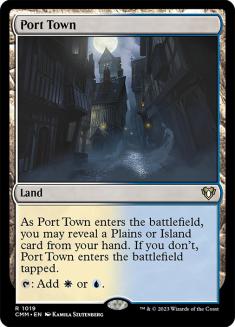We’re going through a critical time in Pioneer right now. After an opening few months in the Beta test mode with frequent bans and everyone simply trying to figure out which formerly powerful cards hold up and which ones fall flat, we emerged at the beginning of the year with a well-defined metagame featuring Chonky Big Red, Azorius Control, and Mono-Black Aggro in the top tier.
But even though Pioneer surged in popularity over those months, it remains a terribly underexplored format. There are too many cards and too many other formats to keep track of for a completely new one to be properly explored in only a few months. I suspect we’ll be finding novel strategies in Pioneer for years to come, and the addition of new sets will of course add another dynamic element to the metagame.
But right now, we’re approaching the biggest weekend of Pioneer tournaments with the first set of Regional Players Tour events coming up, as well as a pair of Team Constructed Opens on the SCG Tour. More eyes are on Pioneer than ever before, and more top players are diving into the format with the intention of breaking it as best they can.
The last time anything close to this level of scrutiny was brought to Pioneer was the Season Two Invitational at SCG CON Winter last November, and that event brought us Golgari Field, a format-defining deck that led to Field of the Dead being banned shortly thereafter. And compared to that time, Pioneer has been much more stable recently, so there is a better-defined metagame for players to attack.
We’ve already seen significant changes to Pioneer from the beginning of this month, with Chonky Big Red falling off significantly, largely being supplanted by the power of Niv-Mizzet Reborn dominating any attrition-based midrange matchup.
Creatures (19)
- 4 Sylvan Caryatid
- 2 Siege Rhino
- 1 Hostage Taker
- 3 Paradise Druid
- 1 Tolsimir, Friend to Wolves
- 4 Niv-Mizzet Reborn
- 1 Kunoros, Hound of Athreos
- 3 Uro, Titan of Nature's Wrath
Planeswalkers (4)
Lands (27)
Spells (10)

Beyond suppressing Chonky Big Red, the emergence of Niv-Mizzet decks has been the driving force behind the recent metagame developments in Pioneer. Its ability to dominate attrition games has essentially cut off that avenue of attack for the rest of the metagame. There a few other decks which also make playing mopey midrange strategies like Chonky Big Red a bad idea, namely Mono-Green Ramp and the various Underworld Breach lists.
These three decks form the top end of Pioneer right now. Underworld Breach and ramp strategies are able to ignore the attrition game of Niv-Mizzet. All three are difficult to interact with because their sheer power gives them a high degree of inevitability. Unsurprisingly, the reaction from the metagame has been to go underneath them.
Mono-Black Aggro is the most successful deck in this regard, and is likely the default best deck in the format as a result. But we’ve also seen a resurgence in Izzet Ensoul because of its speed, as well as some Mono-Red Aggro builds that are much more proficient at ending the game than Big Red:
Creatures (27)
- 4 Monastery Swiftspear
- 4 Bomat Courier
- 3 Hazoret the Fervent
- 4 Soul-Scar Mage
- 4 Bonecrusher Giant
- 4 Rimrock Knight
- 4 Phoenix of Ash
Lands (23)
Spells (10)
Sideboard

This is a pretty typical pattern in the evolution of a metagame. The powerful linear decks dominate early; in Pioneer’s case there were mostly green aggressive decks utilizing the power of mana creatures. Then we figure out good ways of interacting with those strategies and the metagame slows down. Again, in our case it was cheap red removal and Supreme Verdict. Then we move into the arms race phase where players are trying to go bigger than anyone else. Niv-Mizzet Reborn won this contest, triggering the next phase, going underneath the big decks.
As all these decks try to adapt to each other, with the big decks incorporating more anti-aggro tools and such, there’s one Pioneer deck that is rising in metagame share with comparatively little fanfare: Azorius Spirits.
Creatures (35)
- 4 Rattlechains
- 4 Spell Queller
- 3 Selfless Spirit
- 4 Mausoleum Wanderer
- 4 Nebelgast Herald
- 4 Supreme Phantom
- 4 Empyrean Eagle
- 4 Spectral Sailor
- 4 Brazen Borrower
Lands (23)
Spells (2)

Spirits sits in an odd space relative to the rest of Pioneer. It’s not quite as fast as Mono-Black Aggro or Izzet Ensoul, nor is it as powerful as Niv-Mizzet or Underworld Breach decks. In theory, it occupies that no man’s land of space that Big Red has, making it a weak choice, but there’s a key difference between them. Where Big Red plays an attrition game, Azorius Spirits opts for a tempo-based plan, and that matches up quite well against the rest of the metagame.
Since there are two broad categories in the current Pioneer metagame, big and little, let’s look at how Spirits matches up against both.
Azorius Spirits Against Big Things
This category is where moving from attrition to tempo is a slam dunk. The counterspells and other disruptive elements in Azorius Spirits help you tax the mana of decks like Niv-Mizzet, leaving them little time to effectively deploy the extra cards they draw. Against ramp strategies, a well-timed Spell Queller can buy you multiple turns, and you have plenty of ways to get through their big creatures like Cavalier of Thorns or World Breaker. The scariest card they have is Ugin, the Spirit Dragon, but that card is expensive enough that you can establish a battlefield, have it exiled, and rebuild on the end step with a creature or two. If they can exile your battlefield while leaving around a large reach creature of their own, then you’re in trouble, but I’m okay losing those games.
The key difference here between Azorius Spirits and Big Red is that the latter has few proactive plays before Turn 3, instead relying on its cheap removal to keep the battlefield at parity. In matchups where that removal isn’t effective, Big Red has little to punish the opponent. Azorius Spirits has proactive plays, and then starts disrupting on Turn 3 or 4. This means the Spirits deck is trading resources on turns when it has useful attack steps, so every trade brings the opponent closer to death.
And keep in mind that trading resources in the mid-game isn’t even the ideal scenario for Azorius Spirits. Every time you can use a Rattlechains or Spell Queller to blank an opponent’s turn and add another body to the battlefield, you pull hugely ahead.
If things don’t go well, Azorius Spirits plays a surprisingly good aggro game. If you just go for the throat as quickly as possible, killing around Turn 5 is perfectly reasonable, which is on par with decks like Mono-Black Aggro. Normally tempo decks don’t have as robust of an aggro plan, since they trade threat density for disruptive elements, but the fact that Azorius Spirits has so many disruptive creatures allows it to beat down with the best of them.
In Modern, the decks that go big do so quicklyenough that various takes on Spirits needed early plays like Aether Vial and Noble Hierarch to keep pace. Without those cards in Pioneer, I thought the tribe would be lackluster, but the big decks here aren’t punishing you on the first two turns, so playing more cheap creatures has been sufficient.
Azorius Spirits Against Little Things
Typically, tempo decks struggle against linear aggro since they play poorly from behind, and the lower curve of the aggro deck puts them on the back foot, but once again, the threat density of Azorius Spirits lets it mitigate that problem.
If need be, the cheap Spirits can trade early, buying you time to deploy your more powerful creatures, the lords, with some protection. Once you have a lord or two on the battlefield, it’s the Azorius Spirits player who has complete control of how combat goes. Other aggro decks have few flyers, so they won’t be able to block while you can, and so you get to dictate the pace of the game to your liking. That’s a very powerful dynamic in a matchup, since you’re only forced out of your comfort zone if your draw lines up poorly against theirs.
The worry here is that your draw will fall too far behind, forcing you into a defensive posture too early, and you’ll never have time to establish a dominant battlefield of lords. A strong curve of one-mana creatures and a Fatal Push can do this out of Mono-Black Aggro, for example.
Those are going to be tough games to win, but Nebelgast Herald gives you a fighting chance. In combination with flash creatures, especially Rattlechains, it can let you contain a few creatures each combat and turn the race around. Herald also punishes players for trying to dominate the skies with larger flyers and flip the dynamic where you are the one dictating combat.
These matchups will still be tough because you will fall behind rather often, but Azorius Spirits has the tools to come back more than most tempo decks in Magic’s history.
The Curious Case of Curious Obsession
Curious Obsession has been a staple of these decks, but I’m starting to see some lists cut it, as the one I featured above did. It’s certainly a powerful card, but not one that fits given the aggressive turn in the metagame.
When Azorius Spirits first emerged, it was as a foil to Azorius Control. Curious Obsession would be great in that matchup, letting you create a single threat that will take over the game and that you have many ways to protect. But Azorius Control is on the decline, as it’s having trouble competing against the speed of the little part of the metagame and the diversity of threats in the big part of the metagame. It also enjoyed a good matchup against Big Red, which isn’t as prevalent.
The current metagame demands that you either work to end the game when you’re ahead or perform well against the aggressive decks. Curious Obsession does neither. I like Spell Pierce as a replacement since it’s another card that helps you not fall behind against the aggro decks by protecting an early lord from removal while being functional against all the big decks, especially Underworld Breach. However, that’s a slot you can play around with.
The Manabase
Undoubtedly the major weakness of the archetype is that it exists in a friendly color pair, and thus doesn’t have access to a fastland or painland. I’ve seen lists with Mana Confluence to ensure you have the right colors. Mana Confluence. In a two-color deck. They weren’t even playing four copies of Port Town. Because Port Town is a joke.
In an ideal world we’d have buttery smooth mana and the ability to play four copies of Mutavault, aka the best card in Pioneer, but the world is a cruel place. Still, two copies is enough to sate my appetite for creature lands. For now all we can do is hope for a better, more equitable tomorrow.
Unclaimed Territory looks like a reasonable addition to alleviate the mana, but with Brazen Borrower and Settle the Wreckage in the deck that’s a tough sell. You’d really have to limit what cards you play to make Unclaimed Territory work, at which point you’re making significant sacrifices to not stumble as often on Turns 1 and 2.
…the fact that Azorius Spirits has so many disruptive creatures allows it to beat down with the best of them.
With the aggressive turn in the metagame, I’d stay away from Mana Confluence and mulligan more aggressively to ensure a smooth draw. This deck can afford to sacrifice a card in order to establish a strong clock against the big decks or not fall too far behind against the little ones.
I expect that Pioneer will look a lot different from how it does now once the dust settles from the next two weeks of tournaments. A new Underworld Breach or Inverter of Truth build could take over and new brews that we’ve missed for months could emerge. But Azorius Spirits has game against any strategy and virtually zero target on its head, so it’s near the top of my list of decks to play.

